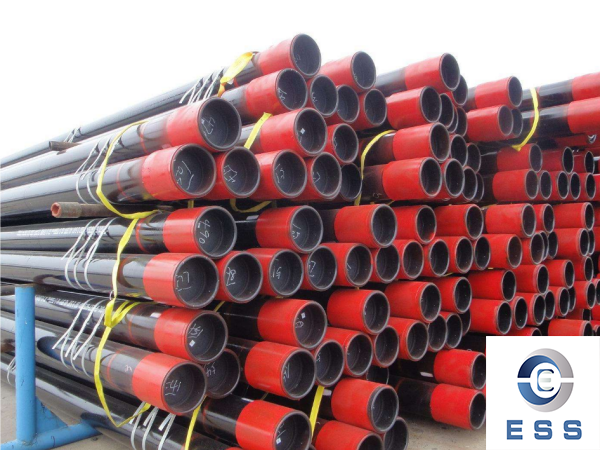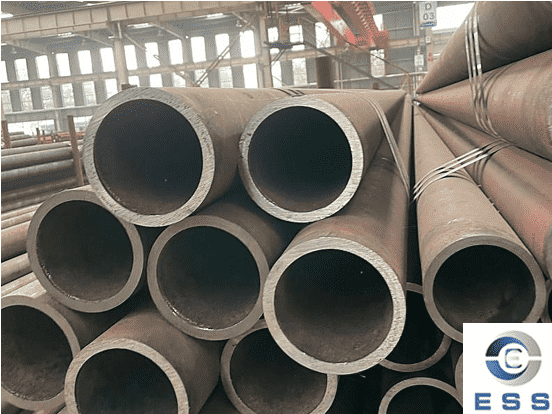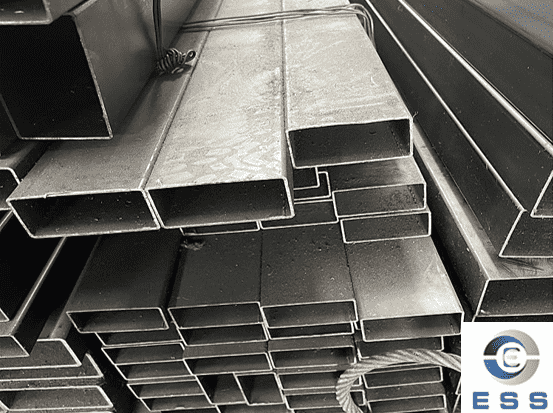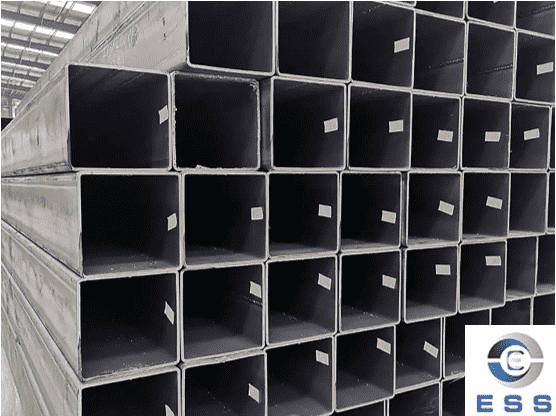OCTG casing damage causes and preventive measures
1 Set loss status
In recent years, during engineering logging in a certain block, a total of 45 wells were found to have varying degrees of casing damage, accounting for approximately 28.5% of the total number of wells. The number of wells with casing damage has shown a sharp increase. The main forms of casing damage mainly include casing bending, shrinkage, staggered breakage, rupture, and casing corrosion and perforation, among which casing shrinkage deformation and casing staggered breakage are the main ones. The overall trend of casing damage is that the pumping life of casing damaged wells is short and the depth of casing damage points is relatively large. Longitudinal damage pattern: Deep casing damage is mostly caused by diameter reduction deformation, shallow casing damage is mostly caused by staggered fracture or rupture, and casing change points are concentrated near the perforation section. Distribution pattern of lateral areas: casing damage well points are concentrated near faults, at structural high points and in areas with large dip angles on the wings.

2 Reasons for casing damage
2.1 Geological factors of casing damage
Geological factors are the main cause of casing damage, including tectonic stress, interlayer sliding, mudstone expansion, salt rock layer creep, oil layer sand production, ground subsidence and oil layer compaction, etc.
2.1.1 Mud rock expansion and creep, salt rock creep
Rocks have the characteristics of creep and stress relaxation. Different types of rocks have different types of creep and corresponding degrees of creep. Even under natural geological conditions, rocks will creep. Clay minerals in mudstone, especially montmorillonite, illite, and kaolinite, will swell and creep when exposed to water. Since the casing prevents this creep and expansion, shear stress is generated on the casing. This increases the external load on the casing. As time goes by, the load will increase. When the compressive strength of the casing is lower than the external load, the casing will be squeezed, flattened or even broken.
2.1.2 Surrounding rock pressure
After drilling, free surfaces appeared in the rocks around the wellbore, destroying the original equilibrium state. When the stress at the stress concentration reaches the yield limit of the surrounding rock, plastic deformation occurs. This deformation is limited by the casing and the cement shell outside the casing. At the same time, the casing is also reacted by the surrounding rock, causing casing deformation and damage.
2.1.3 Fault activity, modern crustal movement, earthquakes and landslides
The existence of faults causes pressure imbalance between faults, causing water to channel between rock layers. When mud and gypsum salt layers coexist with faults, the stress on the casing will be unstable, leading to deformation and damage of the casing. Fault activity is caused by many factors. The movement of strata along the fault level causes extensive damage to the oil layer casing.
2.2 Engineering factors of casing damage
2.2.1 Well reason
The main reasons include insufficient casing design strength, loose thread sealing during construction, and poor cementing quality, which causes casing wear during the drilling process. When running casing into the well, the outer surface of the casing will inevitably rub violently with the hard rock formation. If it is forcibly run in, the casing will suffer significant wear and tear, and the casing string will easily become unstable, bend, and deformed. In addition, after the casing is worn, the inner surface area increases, the contact surface with the corrosive medium increases, and the passivation layer on the surface of the inner wall of the casing disappears, and the inner metal is in direct contact with the corrosive medium, accelerating the corrosion rate of the casing.
2.2.2 Production reasons
High-pressure water injection will cause the formation volume to expand. When pressure spreads outward from the water injection well and permeable rock, it will generate great pressure at the interface between the oil layer and the boundary layer. If this force exceeds the interface strength, slip will occur, causing casing damage to adjacent wells.
Permanent volume changes caused by solid packing during fracturing can also cause formations to slide along the bedding layer.
Sand production from the oil layer will cause the combined effects of the overlying rock mass to sink and the underlying rock mass to overthrow, shortening the reservoir section, affecting the lateral support of the casing, causing it to deflect.
2.3 Corrosion factors causing casing damage
Pipe corrosion means that the sulfur, CO2, HS contained in crude oil and natural gas, and various corrosive substances contained in formation water and injection water react with iron or ferrous ions in the casing to corrode the pipe body. Conditions for casing corrosion include certain temperature, pressure, concentration of ferrous ions, and reducing bacteria present in formation water, most of which are related to the action of sulfate-reducing bacteria. Most casing corrosion occurs in casing solutions with high salinity and low pH. The impact of corrosion on casing damage is mainly in the following two forms of damage to casing:
(1) Corrosion causes the upper casing to leak. From a mechanical principle, casing damage caused by external force will not appear as casing leakage, but the final result of corrosion will cause casing leakage.
(2) Corrosion weakens the wall thickness of the casing and reduces the strength of the casing, causing casing damage. Under the action of corrosion, the casing wall gradually becomes thinner in whole or in part, and the strength of the casing decreases, making it more likely to be damaged under the action of external forces.
3 Set damage inspection methods
In the normal logging process, we can use electromagnetic flaw detection logging, isotope full-well leak detection, caliper logging and other logging methods to detect downhole pipe strings and check whether there is damage or deformation of the casing.
(1) Electromagnetic flaw detection logging can measure the wall thickness changes and damage of the casing in the oil pipe under normal production conditions of the oil and water well, saving the operating costs of checking the casing condition and running the oil pipe. This feature makes it possible to It becomes possible to conduct a general survey of structural damage to oil and water wells. There is a transition between thick and thin walls and casing deformation or scaling.
(2) The isotope five-parameter combination logging can record five curves at the same time. This method isotope tracer curve, flow rate and well temperature data in the tubing, and pressure abnormal points can confirm each other to find casing leakage.
(3) Multi-arm caliper logging is the most widely used in the casing inspection logging process. This instrument is a contact measuring instrument, that is, the measuring arm of the instrument contacts the inner wall of the casing, and the changes in the inner wall of the casing are converted into the radial displacement of the well caliper measuring arm. Through the mechanical design and transmission inside the well caliper instrument, It becomes the vertical displacement of the push rod; the differential displacement sensor converts the vertical displacement change of the push rod into an electrical signal. There is indication of casing leakage.
4 main preventive measures
4.1 Reasonably control water injection pressure
During high-pressure water injection in oil fields, as the water injection pressure continues to increase, the formation pressure level also continues to rise. When the formation pressure exceeds the critical pressure, the formation will slide relative to each other, causing casing deformation, especially casing damage in areas with developed mudstone interlayers or faults. Wells may occur in patches. In addition, long-term high-pressure water injection will aggravate the casing damage rate under the action of long-term high-pressure load. Control the formation pressure within the critical formation pressure or within 70% of the casing anti-collapse strength to slow down the occurrence of casing damage.
4.2 Reasonably control the production pressure difference and maintain the balance of injection and production
Due to unbalanced injection and production, large-scale intensification of well patterns in the later period, and poor connectivity between layers, an additional stress is formed from the high-pressure area to the low-pressure area, inducing formation sliding and causing casing deformation, especially in the high-pressure area. The damage is particularly serious.
4.3 Optimize perforation and reservoir stimulation plans
Any acid fracturing and perforating technology and quality have an important impact on the life of the casing. Repeated perforation or acid fracturing will greatly reduce the casing's extrusion strength and accelerate the damage and deformation of the casing. Carry out fracturing and acidification reformation on the reservoir, and determine the construction pressure. The construction pressure should not exceed 80% of the casing's anti-collapse strength.
4.4 Improve downhole tools to avoid casing grinding
Due to scheme design or construction reasons, phenomena such as falling objects, pipe stuck, and pipe blockage often occur, requiring fishing and grinding, which inevitably causes wear and tear on the casing wall and reduces the strength of the casing. It is recommended to improve the drilling tools and install a centralizing device during the drilling and grinding construction process to reduce eccentric wear and protect the casing.
Read more: The causes of OCTG casing stuck or What are the grades of OCTG casing?













 Eastern Steel Manufacturing Co.,Ltd not only improve product production and sales services, but also provide additional value-added services. As long as you need, we can complete your specific needs together.
Eastern Steel Manufacturing Co.,Ltd not only improve product production and sales services, but also provide additional value-added services. As long as you need, we can complete your specific needs together.










